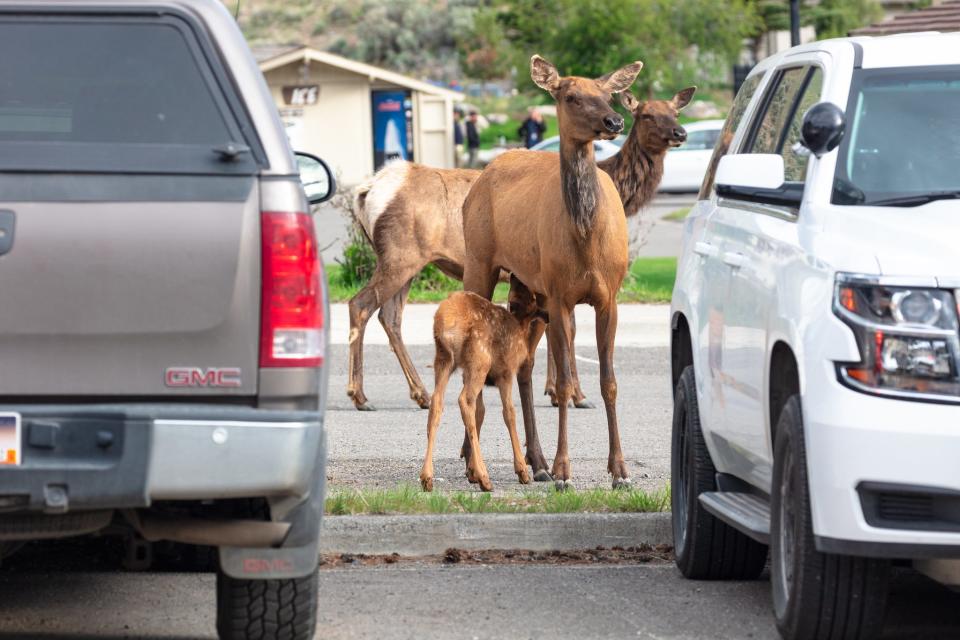Yellowstone National Park issues danger warning for tourists. Here's why.
Headed to Yellowstone National Park anytime soon? The National Park Service is warning park visitors to be careful of the most current “danger.”
That danger is aggressive elk.
During May and June, it’s elk calving season in the country’s first national park. Female elk, or cows, are known to be hostile toward humans who come across as perceived threats.
A cow can weigh about 500 pounds, so you may want to heed the warning.
The park service warned that the elk may run toward people and even kick them. “Attacks can be unprovoked and unpredictable,” the announcement read.
They’re known to charge at people and stomp their front hooves to protect their offspring, a Yellowstone park ranger told Outsider.
More: Early photos of 'world's first national park' Yellowstone
What to do if you encounter an elk

Park guests are advised to keep at least 25 yards from any elk and check around corners or other blind spots before exiting any buildings. Female elk are known to bed calves close to buildings and under cars.
If an elk is running at you, the park service says, take shelter behind a car or other barrier as soon as possible.
Elk are the most common large mammals found in the park. An estimated 10,000 to 20,000 live there during the summer.
The park tells people to keep their distance from wildlife at all times for their own safety and the well-being of the animals.
Unfortunately, tourists tend to break the rules to get that perfect selfie or otherwise encounter wildlife. In 2021, a Yellowstone tour bus driver caught a tourist on camera getting too close to elk to film them. A bull charged the man, who panicked and stumbled onto the ground.
On May 20, a man was seen touching a newborn bison calf that was separated from its herd at Yellowstone. Human interaction can cause wildlife to reject their offspring, and the calf ended up abandoned and died.
Kathleen Wong is a travel reporter for USA TODAY based in Hawaii. You can reach her at kwong@usatoday.com
This article originally appeared on USA TODAY: Yellowstone National Park issues danger warning for aggressive elk

